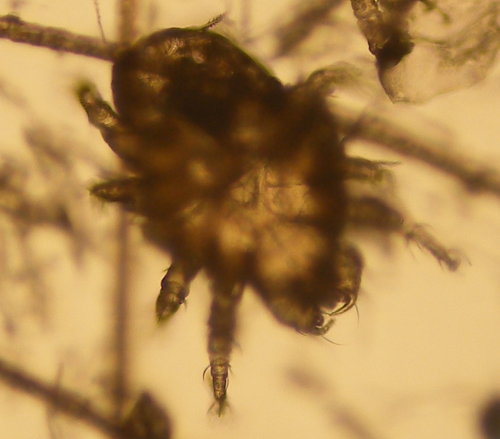Difference between revisions of "Clinical Case 6 - Page 3"
Jump to navigation
Jump to search
| Line 8: | Line 8: | ||
What is this? | What is this? | ||
| − | *<font color="white"> This is a mite. It has long legs, making it a surface mite. It also has large claw-like palps, identifying it as a ''Cheyletiella'' sp. ''Cheyletiella yasguri'' is the most common species on the dog, but this mite is not completely host specific. | + | *<font color="white"> This is a mite. It has long legs, making it a surface mite. It also has large claw-like palps, identifying it as a ''Cheyletiella'' sp. ''Cheyletiella yasguri'' is the most common species on the dog, but this mite is not completely host specific. Animals that are being treated with immunosuppressive drugs are more likely to be affected by clinical cheyletiellosis, perhaps reflecting a loss of the normal host-parasite balance. </font> |
Can this condition affect the owner? | Can this condition affect the owner? | ||
Revision as of 20:56, 30 January 2008
Courtesy of C. Antonczyk
This image is as viewed under the x10 objective.
What is this?
- This is a mite. It has long legs, making it a surface mite. It also has large claw-like palps, identifying it as a Cheyletiella sp. Cheyletiella yasguri is the most common species on the dog, but this mite is not completely host specific. Animals that are being treated with immunosuppressive drugs are more likely to be affected by clinical cheyletiellosis, perhaps reflecting a loss of the normal host-parasite balance.
Can this condition affect the owner?
- Yes. Owners may develop red papules in areas of prolonged contact with their pets, often on the chest and abdomen, as well as the arms.
How is this condition treated?
- There is no licenced treatment for cheyletiellosis. Various treatments can be used, including fipronil spray and selamectin. As well as treating the affected animal, any in-contact animals should be treated. The environment must also be treated with an effective flea spray. The affected animal may benefit from shampooing with selenium sulphide shampoo.
